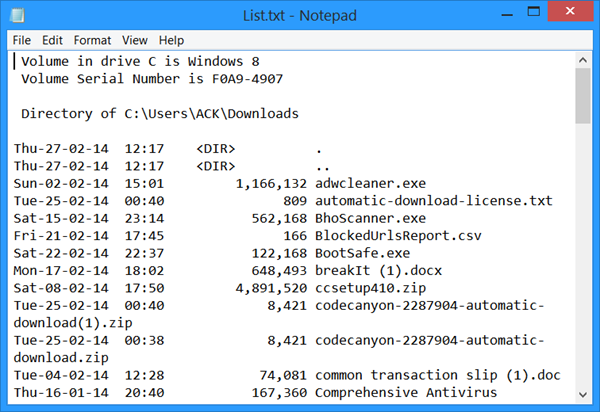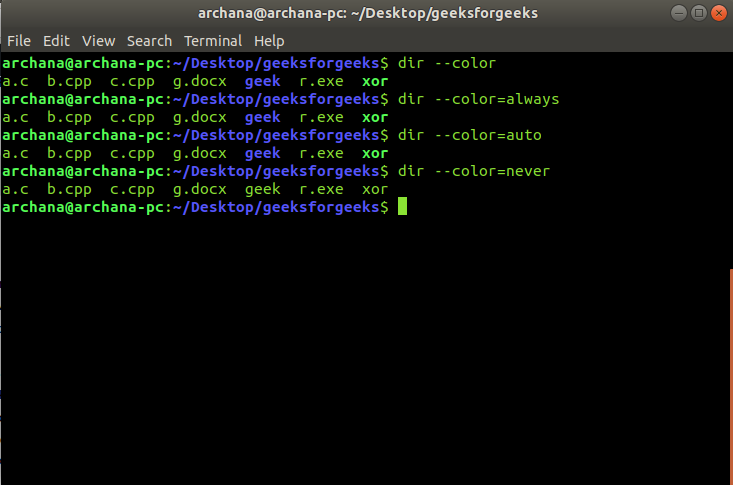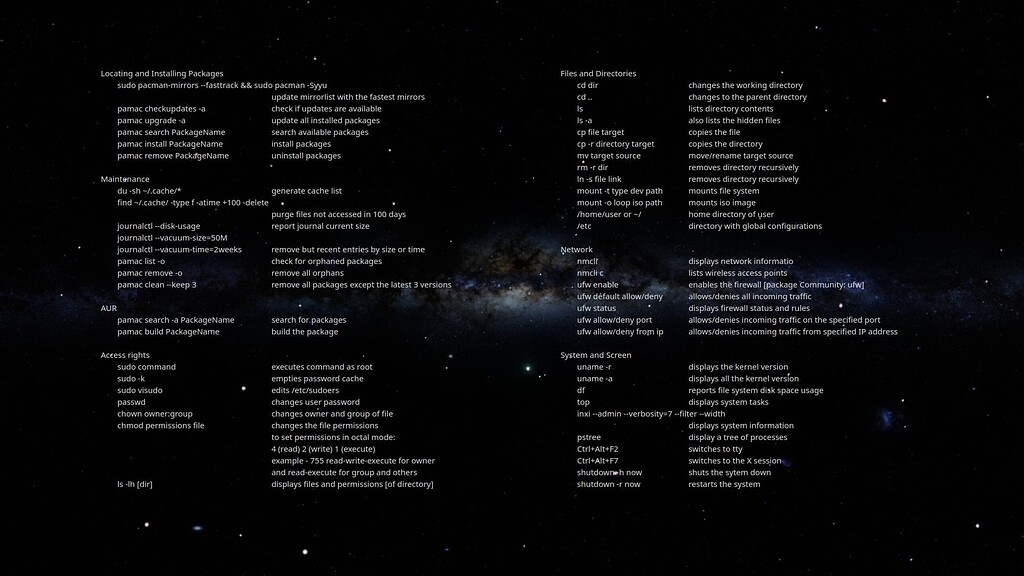
- #CMD LIST DIRECTORY CONTENTS HOW TO#
- #CMD LIST DIRECTORY CONTENTS UPDATE#
- #CMD LIST DIRECTORY CONTENTS ZIP#
This command will list all the files and directories within the current directory. The default of 0 will not display any files. dir: To view the contents of a directory, type dir.
#CMD LIST DIRECTORY CONTENTS HOW TO#
The default of 0 will display all subfolders. How to List all the files in a folder using CMD. By default, the ls commands lists the contents of the working directory (i.e. depth – It specify the subfolder levels to display.directory – This is the directory path of any files.

There are two ways to get the list of folders files in a SQL table.ġ > Using xp_cmdshell CREATE TABLE tblgetfileList (excelFileName VARCHAR(100)) ĮXEC xp_cmdshell 'dir /B "D:\databasefile"' Ģ> Using xp_DirTree exec xp_DirTree directory, depth, file Now, you can see we have four excel files in folder dir - C:/databasefile, and we want to get all these file name in a SQL table.
#CMD LIST DIRECTORY CONTENTS UPDATE#
To update the currently configured value for this feature.
#CMD LIST DIRECTORY CONTENTS ZIP#
I have several folders all containing several zip files which contain. The command ls -r lists the contents of a directory in reverse order. Running ls command with no option list files and directories in a bare format where we wont be able to view details like file types, size, modified date. txt file of the directory listing of the files within a zip file. dir C:\Folder\SubFolder > C:\Folder\listoffiles.txt. The command ls -t lists items by time of last change instead of alphabetically. Simply add this redirection symbol at the end of the command. Indeed, use the > superior symbol to redirect the output to a specific text fil instead of displaying it to the screen. Now, Enable Xp_cmdshell extended stored procedure. Use the > and a folder name or path to write the list of the files directly into a result text file. For a simple directory listing, at the Unix prompt, enter. This should open a black and white command prompt displaying the above file path.


Click in the address bar and replace the file path by typing cmd then press Enter. To update the currently configured value for advanced options. You can use the ls command to list the files in any directory to which you have access. Navigate to the directory containing the folders you wish to appear in your list. To allow advanced options to be changed.ĮXECUTE sp_configure 'show advanced options', 1 Using SQL Server built-in extended stored procedure called xp_cmdshell you can access the files name from folder to SQL tables, but first you need to enable this in SQL Server, by default it is disabled.įollowing are the steps to enabling it, First enable advance option in master database. How to get the list of all the files in a folder in SQL table?


 0 kommentar(er)
0 kommentar(er)
